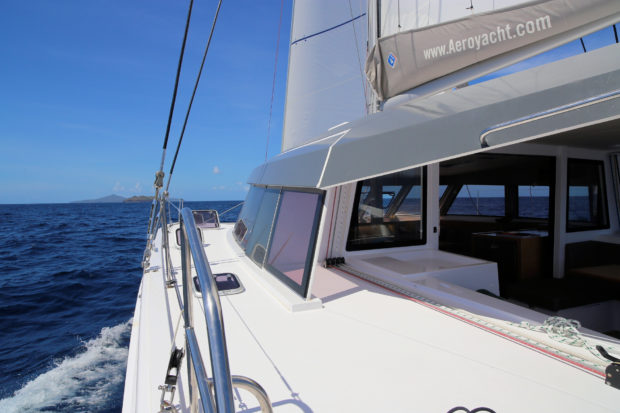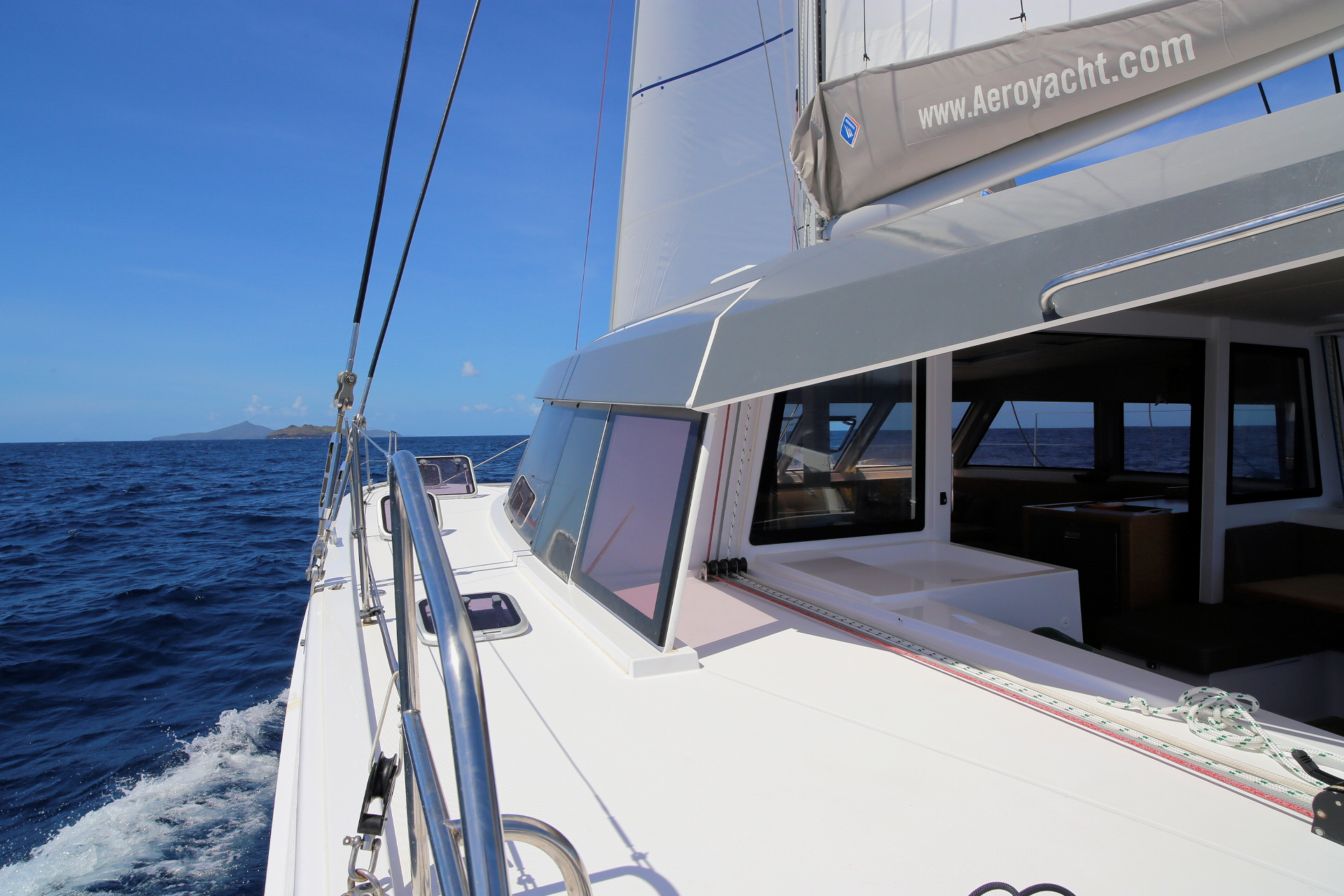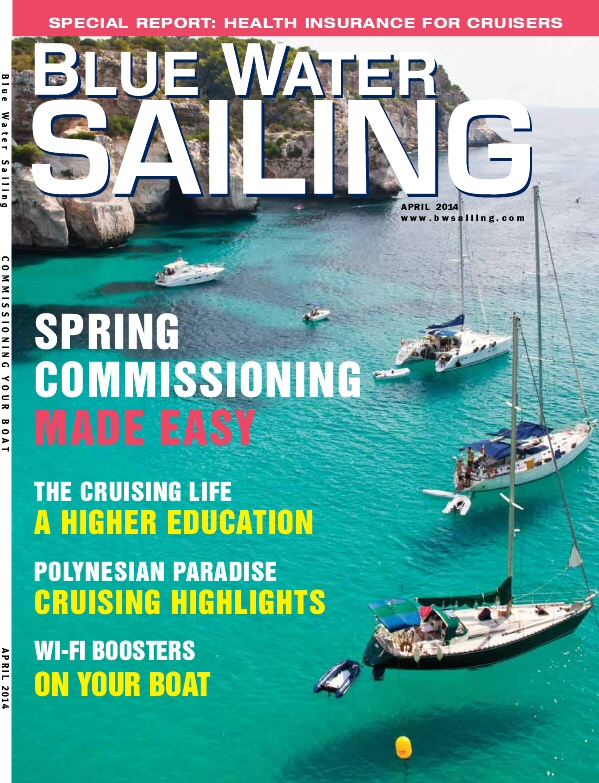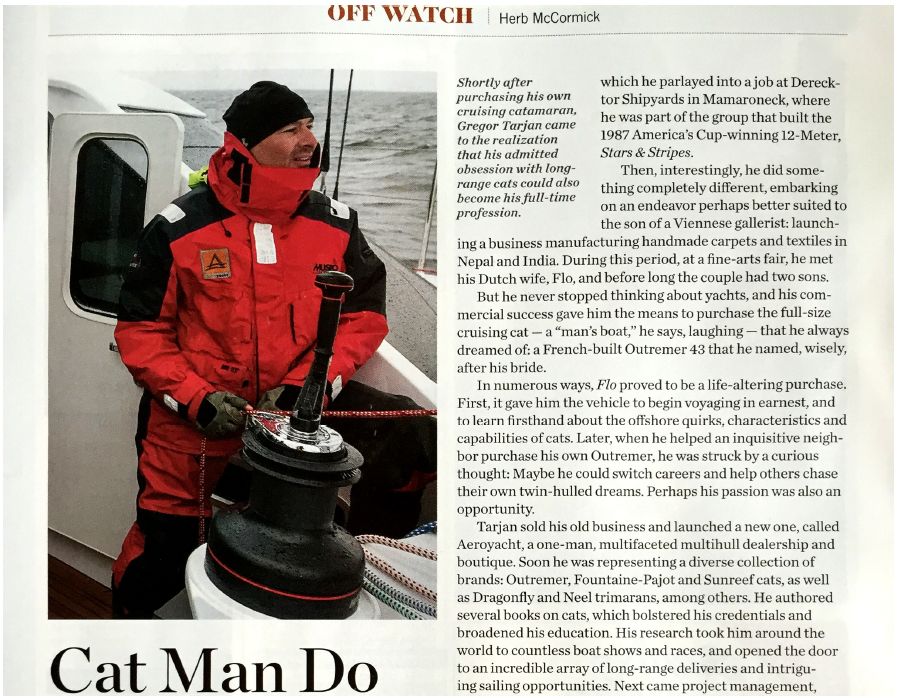
“When winter ends and sailing season begins its always nice to go for a bike
ride. During the first ride of the year it soon becomes apparent that more
time is spent peddling uphill than coasting downhill. I guess sports are like
that, there is always something hard about them. Sailing seems no
exception. Living in the North Eastern United States the prevailing summer
breezes blow from the southwest. If you wish to do anything other than
broad reach out and back, windward sailing will be on the menu.
Opinions about a multihull’s windward performance vary almost as much as
individual boats vary. Probably general opinions would fall somewhere
along these lines. Good mono-hulls go to windward better than multihulls.
Trimarans go to windward better than catamarans. The trouble is these are
generalizations and if a lot of time is spent sailing to windward it is worth
knowing what specific factors make for good windward performance.
These are a few anecdotal observations that help explore some
performance specifics. I have owned a light, daggerboard, standing
headroom in the hulls, 30 ft catamaran. It went to windward well until
reefing was required, and then the high sided hulls wanted to go sideways
more than the reduced sail plan wanted the boat to go forward.
Another 46 ft catamaran I sailed on with slender daggerboards would slip
sideways below 8 knots, but if speed picked up significantly and the crew
was up to the challenge the cat would climb to windward well.
On an older 35 ft trimaran with near vertical sided amas and a large dagger
board, windward performance was decent. When I figured out how to
further flatten the main sail, windward performance improved. And at times
this was a single reefed main. On this same trimaran in a 10 knot afternoon
breeze, I was passed like I was at anchor by a beach catamaran with a
couple on the trapezes.
So what can be deduced from these experience when it concerns
windward performance?
- A boat with high sides or high windage structures will loose windward
performance, and when reefing occurs this problem will be
compounded.
- A boat may “foot” well if the crew has the skill and courage to sail fast. At
slower speeds the foils won’t produce as much windward lift
- At somewhat slower speeds 8 – 15 knots, larger underwater surfaces
that resist the sideways force of the wind make for reasonable mid range
windward performance.
- Above the water, properly trimmed quality sails add speed and safety to
windward performance
- Being able to move weight around (the crew of the beach cat) can
improve windward performance. Keeping weight low and centered and
optimizing the boat’s best natural angle of heel improves airflow over the
sails.
- A flatter single reefed sail may behave better to windward than a
somewhat overpowered full main.
If you are buying a boat and particularly a multihull, look at it carefully with
an eye towards the time usually spent trying to go to windward. Take a test
sail and do compass reading tacks to windward. Think about your
windward goals. Are you OK with a white knuckle high footing speed romp
to windward? Do you want the security of predictable progress away from
a lee shore or a rocky point? Or are you a gentleman or women sailor who
only sails down wind? I wish I was the latter, but as sure as I peddle my
bike up hills, I always end up going to windward. Lastly boats that go
poorly to windward sell more power boats”… Cheers Peter



